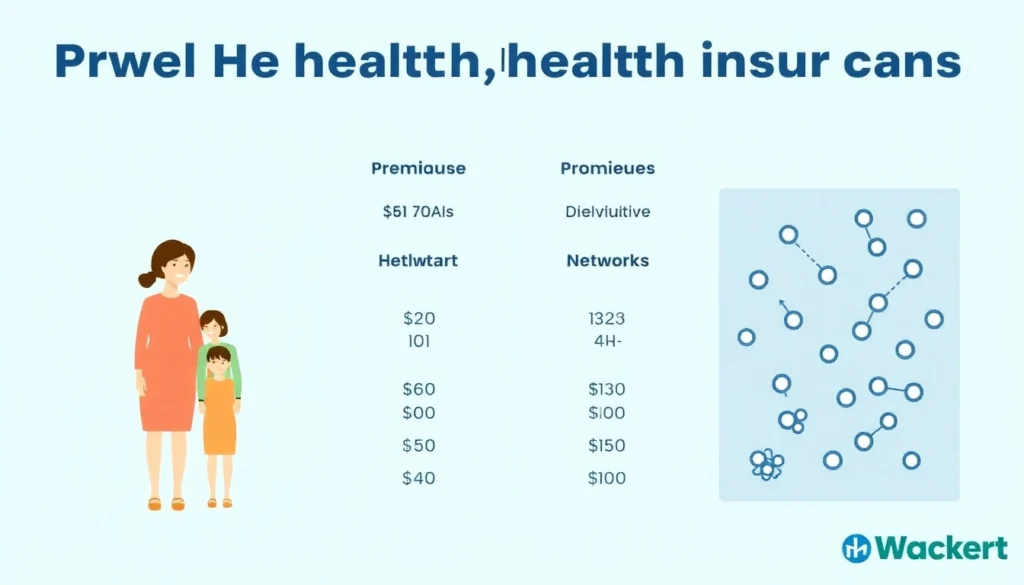
Private health insurance offers flexible coverage options outside of traditional employer-sponsored or government plans. It enables individuals and families to tailor networks, benefits, and costs to their unique needs, with the convenience of year-round enrollment and a broad range of plan types. This guide focuses on understanding the true cost of private health coverage and practical steps to compare plans, budgeting effectively, and maximizing value.
For a practical snapshot of costs and how they translate to your monthly budget, explore Private health insurance cost and start comparing plans today.
What is Private Health Insurance?
Private health insurance is a voluntary program you purchase directly from insurers or via licensed brokers, designed to supplement or replace employer- or government-backed coverage. It provides a menu of plan types, deductible levels, and network arrangements, enabling you to choose participation with doctors and facilities you prefer. Unlike ACA marketplace plans, many private options offer year-round enrollment, broader provider networks, and customizable cost structures that can align with tighter budgets or specific medical needs.
Why Choose Private Health Insurance?
- Year-round enrollment: Sign up whenever you need coverage, avoiding open enrollment windows.
- Customization: Align premium, deductible, and copay levels with your financial situation and health risks.
- Broader networks: Access a wider range of doctors, specialists, and facilities.
- Plan variety: Choose among PPOs, HMOs, EPOS, and indemnity-style arrangements to match your lifestyle.
These features make private plans appealing to freelancers, families seeking flexibility beyond ACA plans, and individuals with specific care needs not readily covered by marketplace options.
Who Benefits from Private Health Insurance?
- Freelancers and self-employed professionals without employer coverage.
- Individuals not eligible for ACA subsidies seeking alternatives to marketplace plans.
- Families needing broader provider choice or personalized benefit structures.
- People with particular medical services not well-covered by employer plans.
Private Health Insurance vs ACA Plans: Key Differences
Private health insurance and ACA plans differ in enrollment timing, network breadth, pricing structure, and subsidy availability. ACA plans are designed to guarantee coverage for pre-existing conditions and include essential health benefits with subsidies based on income. Private plans vary more widely: some cover pre-existing conditions, others exclude them or impose waiting periods; many offer year-round enrollment and a broader choice of networks and premium models. When choosing, weigh access to your preferred doctors, the total annual cost, and whether subsidies apply to your situation.
Types of Private Health Insurance Plans
- PPO (Preferred Provider Organization): Large network and flexibility to see specialists without referrals; typically higher premiums.
- HMO (Health Maintenance Organization): Lower costs and strong preventive care; requires selecting a primary care physician and referrals for specialists.
- EPO (Exclusive Provider Organization): No referrals needed for specialists; fewer out-of-network options but usually lower premiums than PPO.
- Indemnity Plans (Fee-for-Service): Maximum provider freedom; often higher out-of-pocket costs and more claim paperwork.
How Much Does Private Health Insurance Cost?
Costs vary widely by age, location, coverage level, and whether the plan is for an individual or a family. Industry data show broad ranges: private plans can cost from roughly $100 to over $600 per month for premiums, with annual premiums for single coverage around $8,951 and family coverage around $25,572 on average (based on recent national figures). These numbers illustrate general trends rather than a quote, underscoring the importance of shopping for plans that fit your health needs and budget.
Managing Your Private Health Insurance Cost: Budgeting and Optimization
- Compare once, then re-check: Use ZIP-code based quotes to compare plans in your area and regularly review options as your needs change.
- Balance premium and deductible: A higher deductible often means a lower monthly premium; ensure you can cover the deductible if you anticipate medical expenses.
- Consider network and drug coverage: Verify that your prescriptions and preferred doctors are covered with favorable copays.
- Family vs. individual plans: If you have dependents, a family plan may offer better value per person and shared deductibles.
- Maximize value beyond premiums: Look for plans with robust preventive care, reasonable copays, and predictable out-of-pocket costs.
Frequently Asked Questions
Do pre-existing conditions affect cost?
Yes. Some private plans may impose waiting periods or exclude pre-existing conditions, while others may offer broader coverage. ACA plans are required to cover pre-existing conditions, but private plans vary—review the policy terms carefully.
When is Private health insurance cost a concern for year-round options?
Year-round options matter most if you experience life changes (new job, gig work, travel, or relocation) or need immediate coverage outside open enrollment periods. In these cases, a flexible private plan can prevent gaps in protection while you compare options.
How to compare plans and read the fine print?
Focus on total cost of care (premiums plus deductibles and out-of-pocket maximums), network adequacy, drug coverage, and any waiting periods for specific services. Look for transparency around out-of-network charges and reasonable copay structures.






